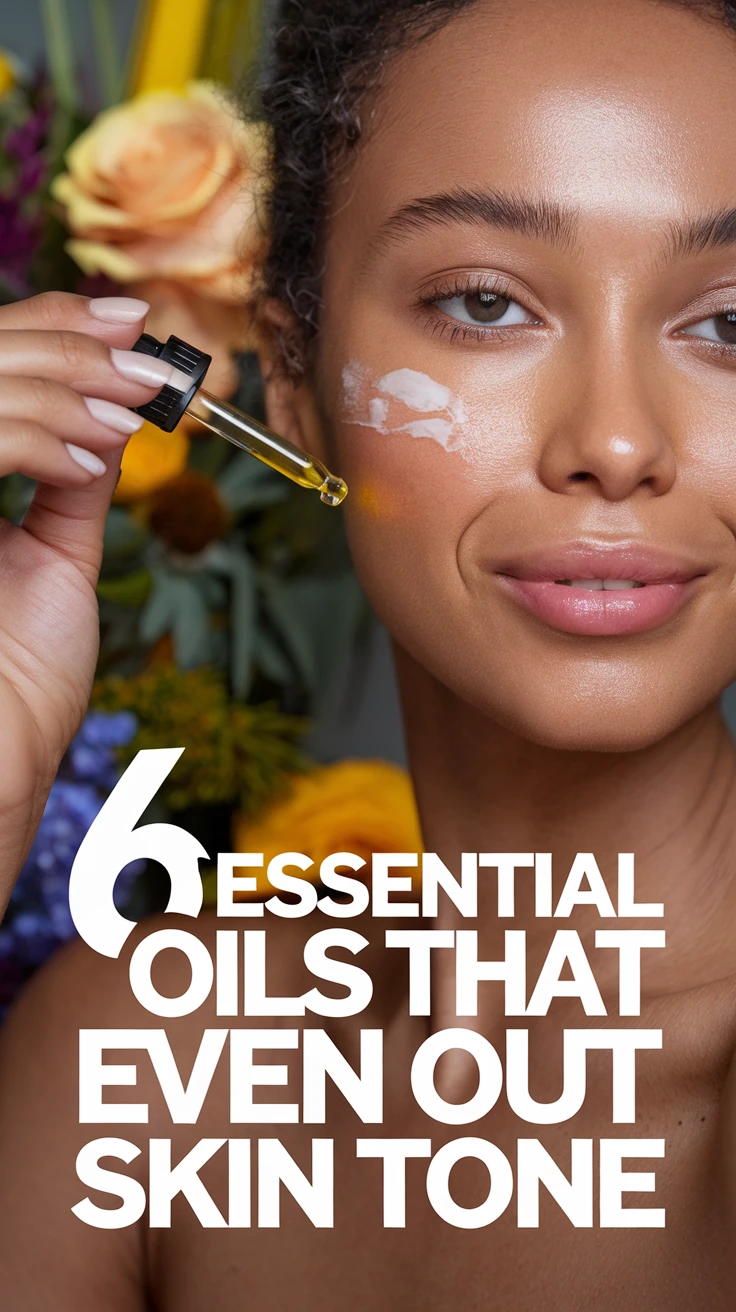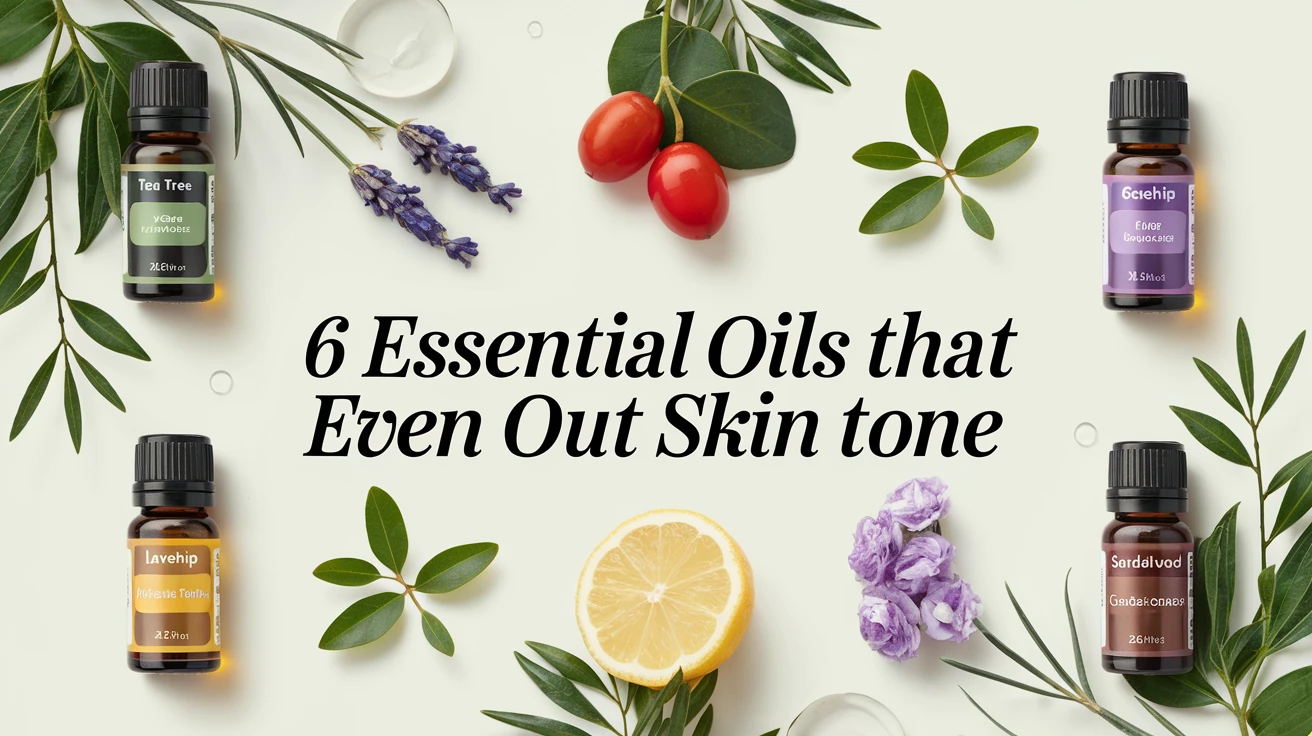
Natural Solutions for Uneven Skin Tone
Struggling with dark spots, hyperpigmentation, or uneven skin tone? You’re definitely not alone. Whether it’s post-acne marks, sun damage, or melasma, pigmentation issues can be stubborn and frustrating to deal with. While there’s no shortage of expensive creams and treatments promising miracle results, more and more people are turning to essential oils for pigmentation as a natural alternative. These concentrated plant extracts have been used for centuries for their healing properties, and modern research is beginning to back up what traditional medicine has long known.
I’ve been on my own journey with hyperpigmentation (thanks, hormones and sun exposure!), and I can tell you that patience and consistency are key—no matter what route you take. But there’s something particularly satisfying about reaching for natural remedies that work with your skin rather than harsh chemicals that might create other issues down the line. Let’s explore how these powerful botanical oils might help you achieve that even, glowing complexion you’ve been dreaming of.
![]() As an Amazon Associate, I earn from qualifying purchases.
As an Amazon Associate, I earn from qualifying purchases.
Understanding Skin Pigmentation: Why Those Spots Appear
Before we dive into the solutions, it’s worth understanding what we’re dealing with. Pigmentation isn’t just one thing—it comes in several forms:
- Hyperpigmentation: Darkening of skin due to excess melanin production
- Melasma: Hormone-related pigmentation often triggered by pregnancy or birth control
- Post-inflammatory hyperpigmentation: Dark spots left after acne, eczema, or skin injuries
- Sun spots/age spots: Pigmentation caused by cumulative sun exposure
So what causes these issues? Several factors can trigger excessive melanin production:
- UV exposure (the biggest culprit!)
- Hormonal changes
- Inflammation
- Skin injuries
- Certain medications
- Aging
Understanding your specific type of pigmentation can help you choose the most effective essential oils for pigmentation treatment. But here’s the good news—many essential oils address multiple causes simultaneously through their anti-inflammatory, antioxidant, and cell-regenerating properties.
How Essential Oils Work Their Magic on Uneven Skin Tone
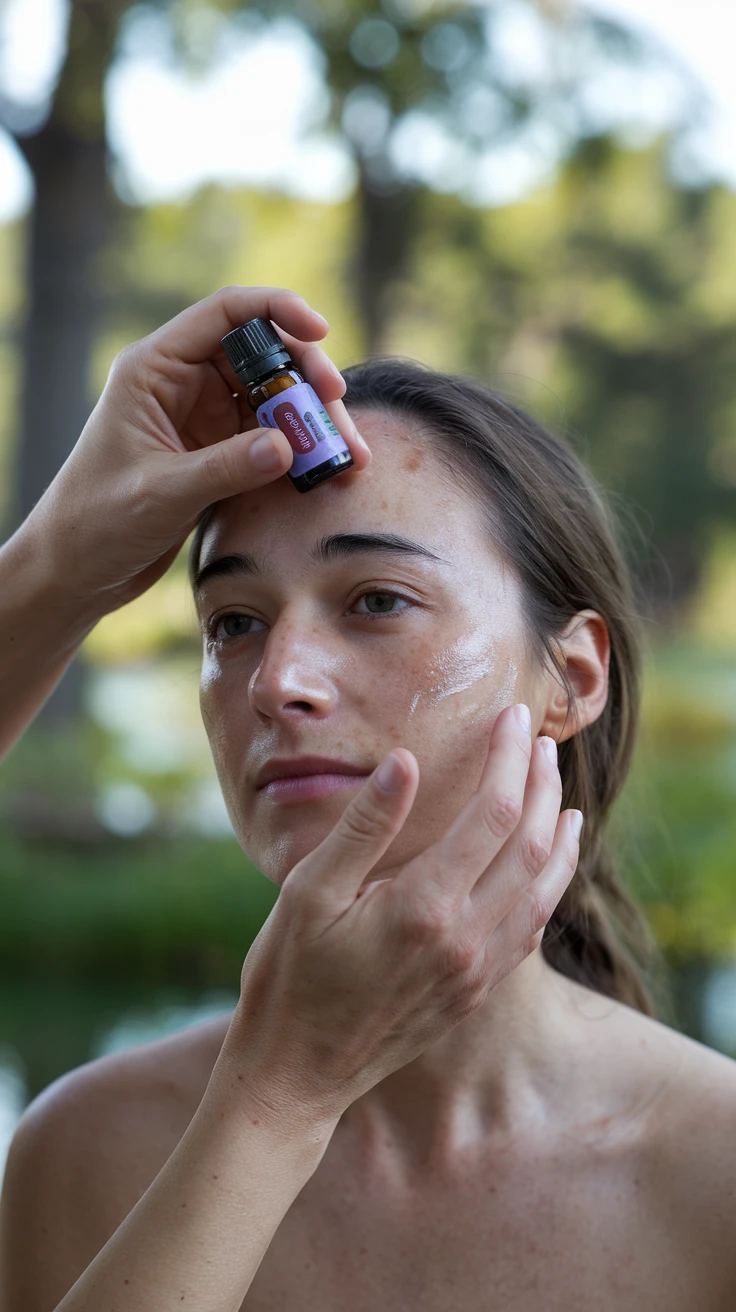
Essential oils aren’t just lovely smelling—they’re powerhouses of bioactive compounds that can influence your skin on a cellular level. When it comes to pigmentation, they work through several mechanisms:
- Inhibiting tyrosinase: Many oils contain compounds that help inhibit this enzyme critical to melanin production
- Antioxidant protection: They fight free radicals that contribute to pigmentation
- Increasing cell turnover: Some oils gently exfoliate, helping to fade existing dark spots
- Reducing inflammation: Less inflammation means less post-inflammatory hyperpigmentation
- Supporting skin barrier: A stronger barrier means better protection against pigmentation triggers
Unlike some harsh chemical treatments, essential oils for pigmentation tend to work more gently and holistically. They’re not going to bleach your skin overnight (which wouldn’t be healthy anyway), but rather support your skin’s natural balance and healing processes.
Pro Tip: Consistency is absolutely key when using natural remedies for pigmentation. You’ll need to use them regularly for at least 6-8 weeks before judging results.
Top 8 Essential Oils That Combat Pigmentation
Let’s get to the heart of the matter—which essential oils show the most promise for evening out skin tone? Here are the star players:
1. Lavender Essential Oil
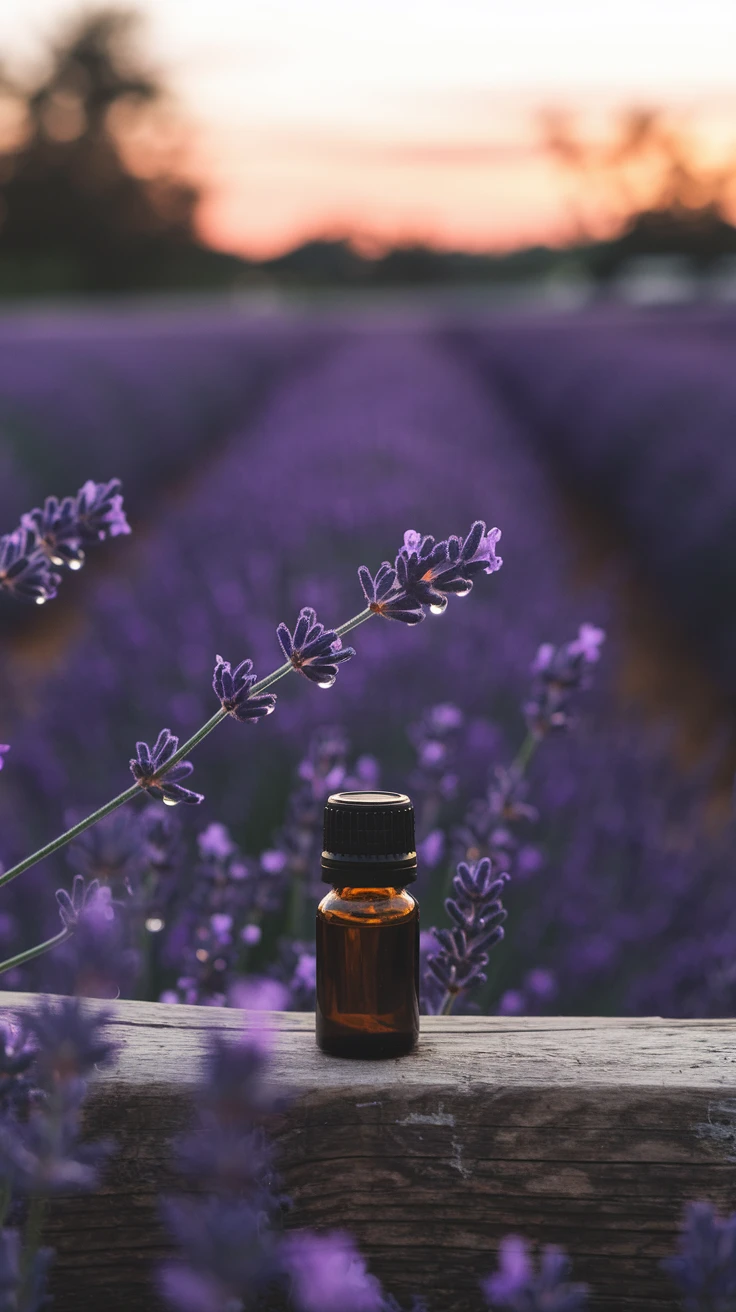
Don’t let its reputation for relaxation fool you—lavender is a multitasking marvel for skin.
- Contains linalool and linalyl acetate with anti-inflammatory properties
- Helps heal post-acne marks that can lead to pigmentation
- Calms irritated skin, preventing inflammatory responses that worsen dark spots
- Balances sebum production, which can indirectly help with pigmentation issues
Best for: Sensitive skin and post-inflammatory hyperpigmentation

View on AmazonAs an Amazon Associate, I earn from qualifying purchases.

View on AmazonAs an Amazon Associate, I earn from qualifying purchases.
2. Tea Tree Essential Oil
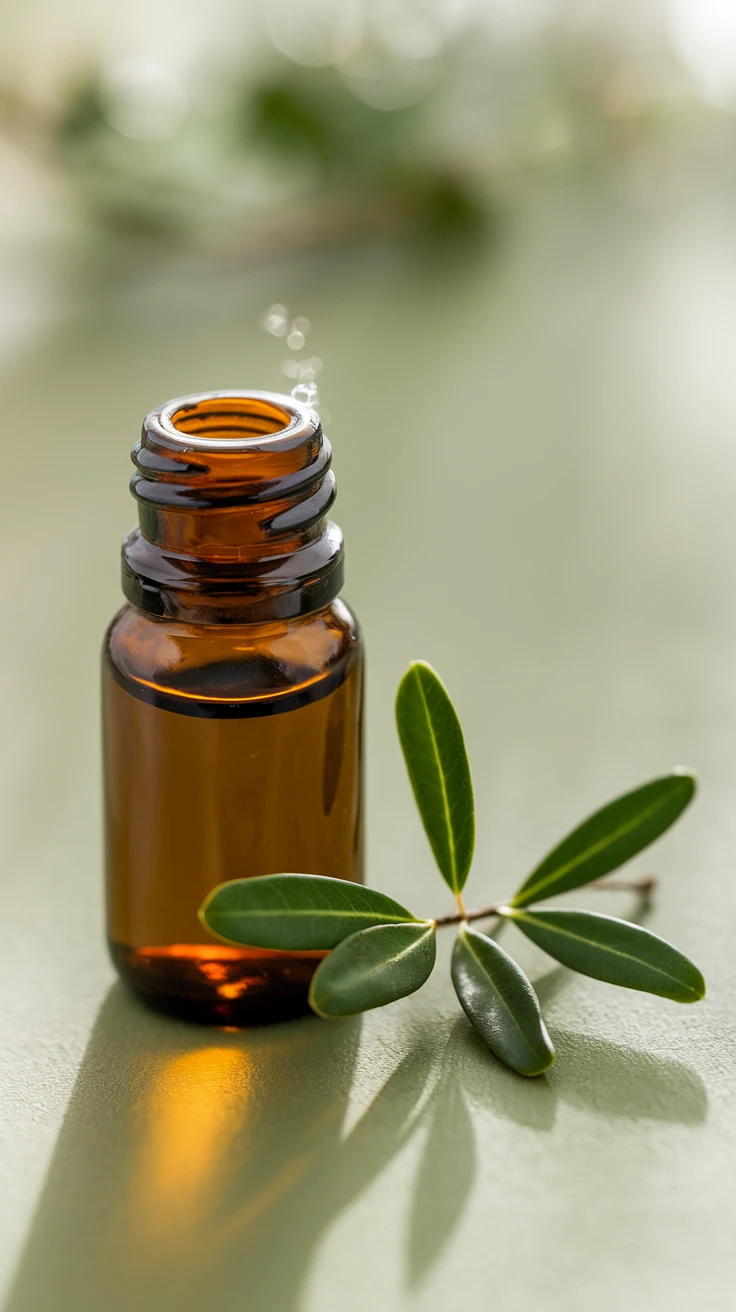
While primarily known for fighting acne, tea tree oil also has benefits for pigmentation:
- Prevents acne breakouts that can lead to post-inflammatory hyperpigmentation
- Has mild exfoliating properties that help fade existing dark spots
- Contains terpinen-4-ol that helps reduce inflammation
- Antimicrobial properties help maintain clear skin
Best for: Acne-related pigmentation and oily skin types
3. Frankincense Essential Oil
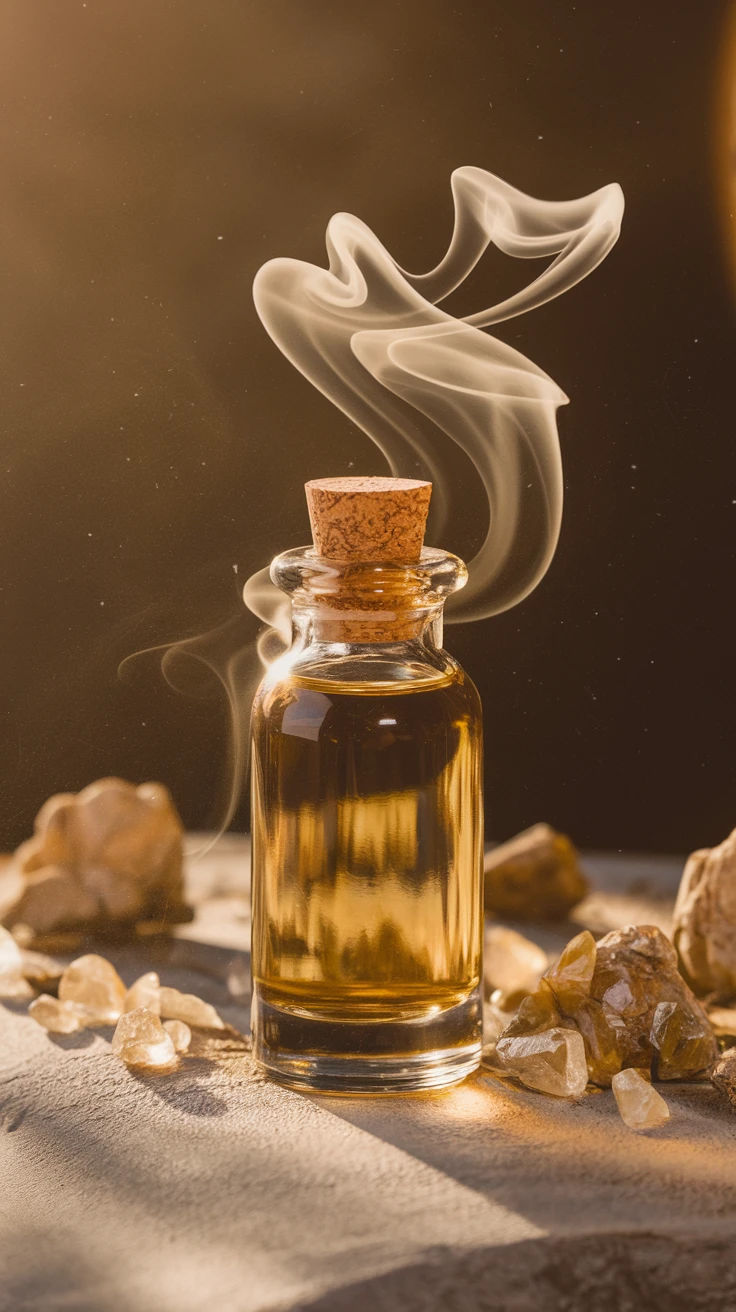
This ancient oil has been prized for thousands of years, and for good reason:
- Promotes cellular regeneration, helping to replace pigmented cells with healthy new ones
- Contains boswellic acids with powerful anti-inflammatory effects
- Strengthens skin and improves elasticity
- Reduces the appearance of scars and marks
Best for: Mature skin with age spots and long-standing pigmentation issues

View on AmazonAs an Amazon Associate, I earn from qualifying purchases.

View on AmazonAs an Amazon Associate, I earn from qualifying purchases.
4. Lemon Essential Oil
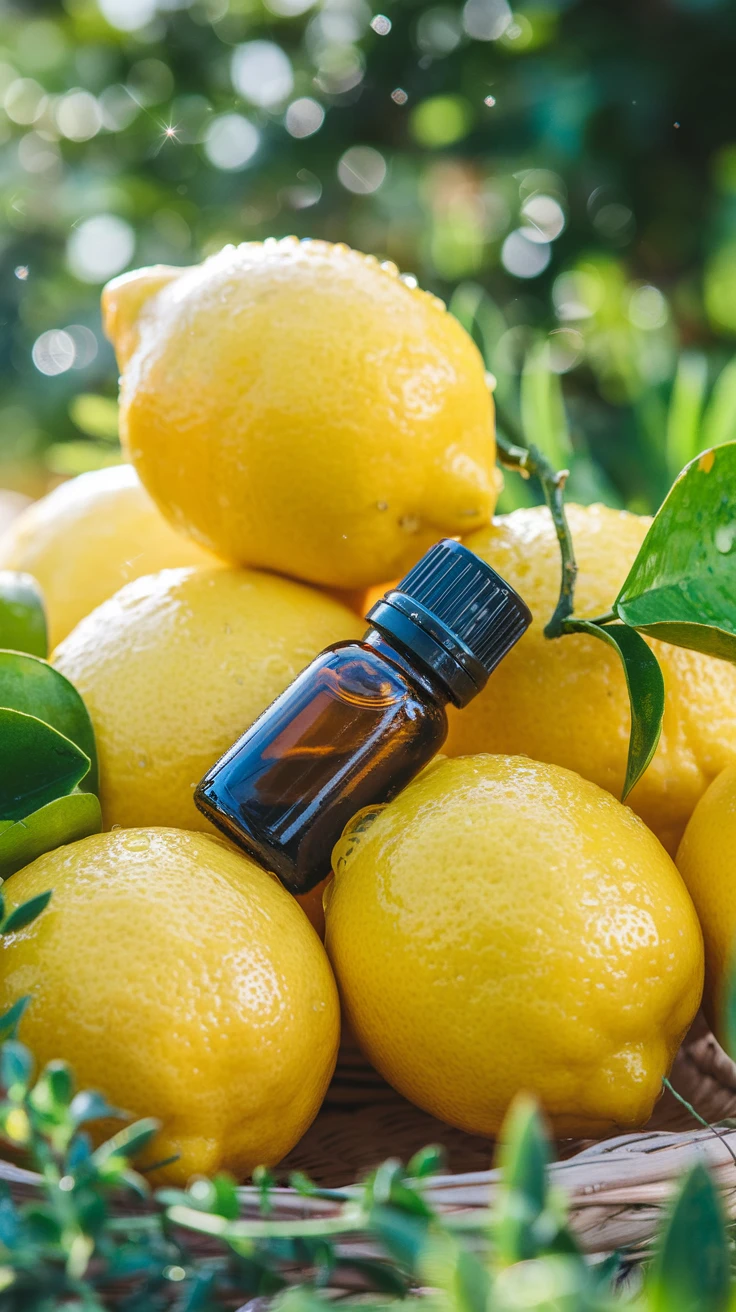
This citrus powerhouse is particularly effective for brightening:
- Contains natural AHAs (alpha-hydroxy acids) that gently exfoliate
- High in vitamin C, which inhibits melanin production
- Brightens skin tone with consistent use
- Has astringent properties that help tighten and tone skin
Best for: Overall brightening and lightening of dark spots
Caution: Citrus oils can cause photosensitivity—only use at night and always wear sunscreen during the day!
5. Rosehip Seed Oil
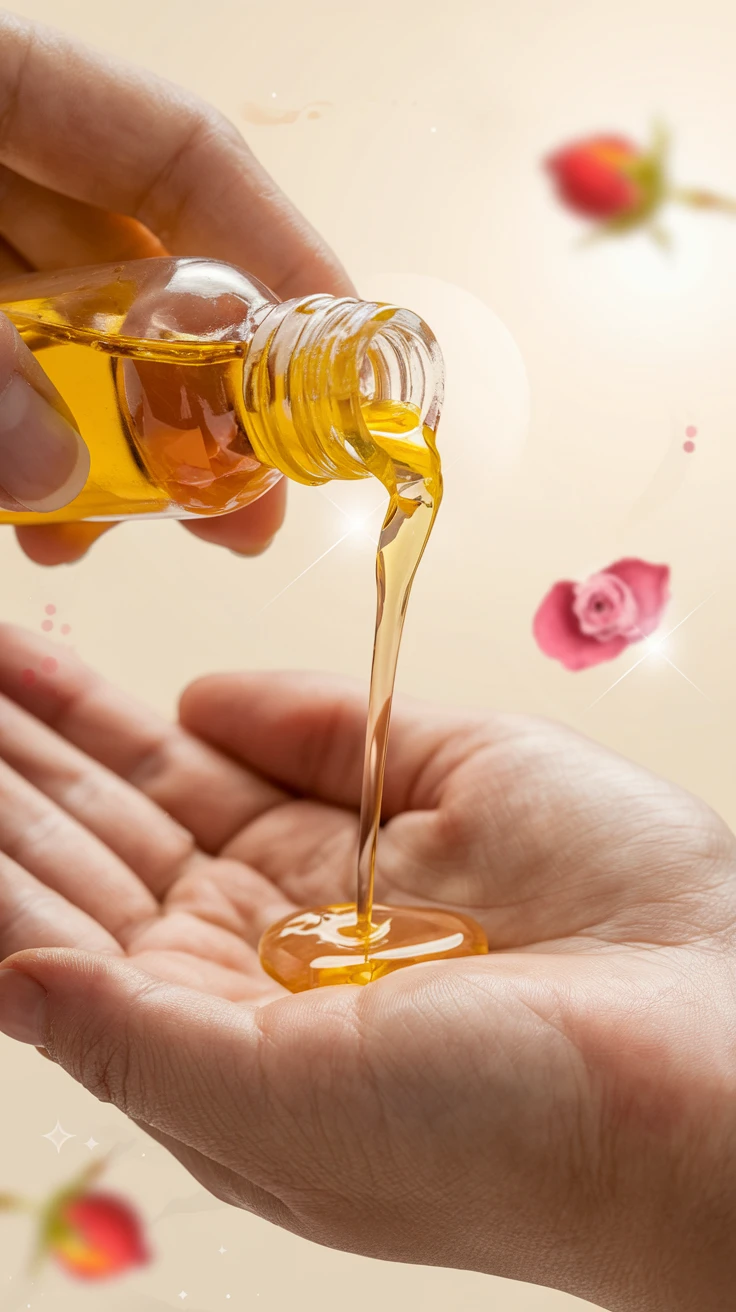
Technically a carrier oil rather than an essential oil, but too valuable to exclude:
- Rich in trans-retinoic acid, a natural form of vitamin A that promotes cell turnover
- High in vitamins C and E, powerful antioxidants that fight pigmentation
- Contains lycopene which helps protect against sun damage
- Deeply moisturizing without clogging pores
Best for: All skin types, especially dry or mature skin with sun damage

View on AmazonAs an Amazon Associate, I earn from qualifying purchases.

View on AmazonAs an Amazon Associate, I earn from qualifying purchases.
6. Sandalwood Essential Oil

This exotic oil has been used in Ayurvedic medicine for centuries to even skin tone:
- Contains alpha-santalol which has been shown to reduce tyrosinase activity
- Soothes inflammation and redness
- Has natural astringent properties that help tone skin
- Promotes cellular renewal
Best for: Stubborn pigmentation and overall skin tone evening
7. Helichrysum Essential Oil
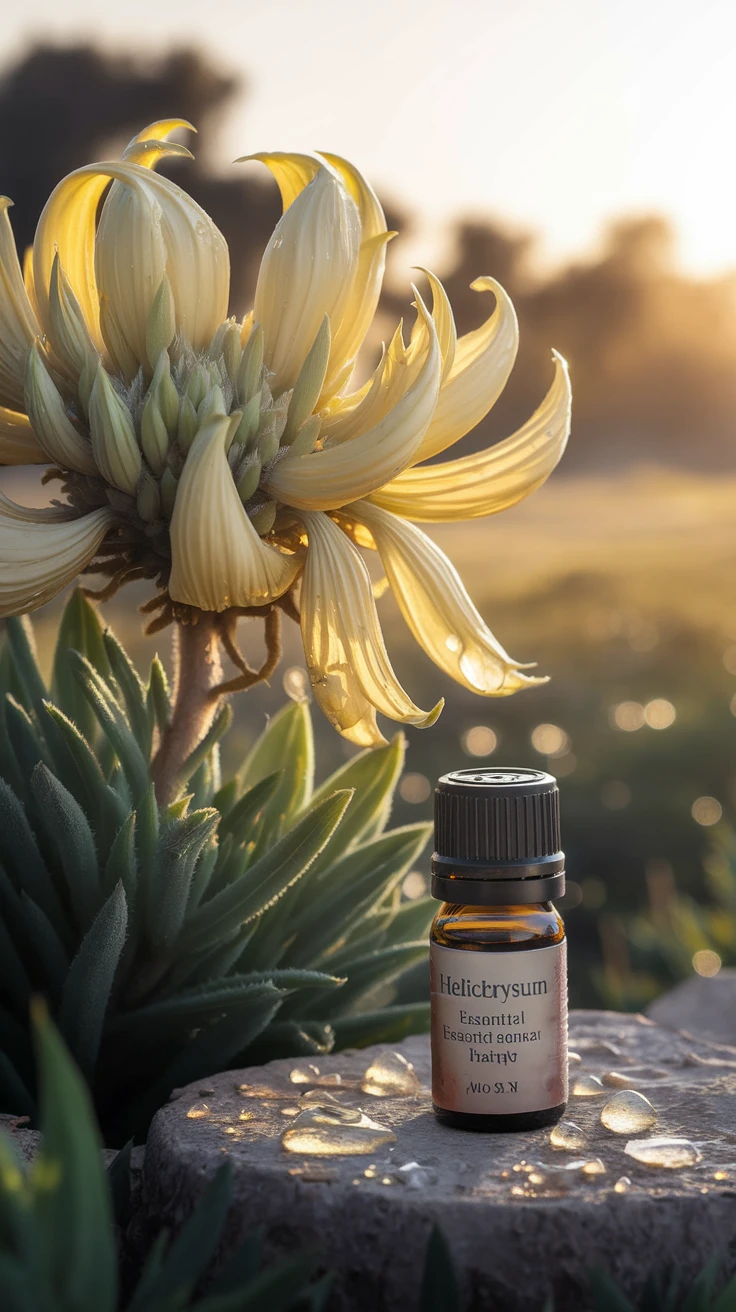
Sometimes called “immortelle,” this oil is a bit pricier but worth considering:
- Contains diketones that help dissolve excess pigmentation
- Powerful anti-inflammatory properties reduce redness
- Promotes new cell growth and tissue regeneration
- Helps fade old scars and marks
Best for: Stubborn, long-standing pigmentation issues and scarring

View on AmazonAs an Amazon Associate, I earn from qualifying purchases.

View on AmazonAs an Amazon Associate, I earn from qualifying purchases.
8. Carrot Seed Essential Oil
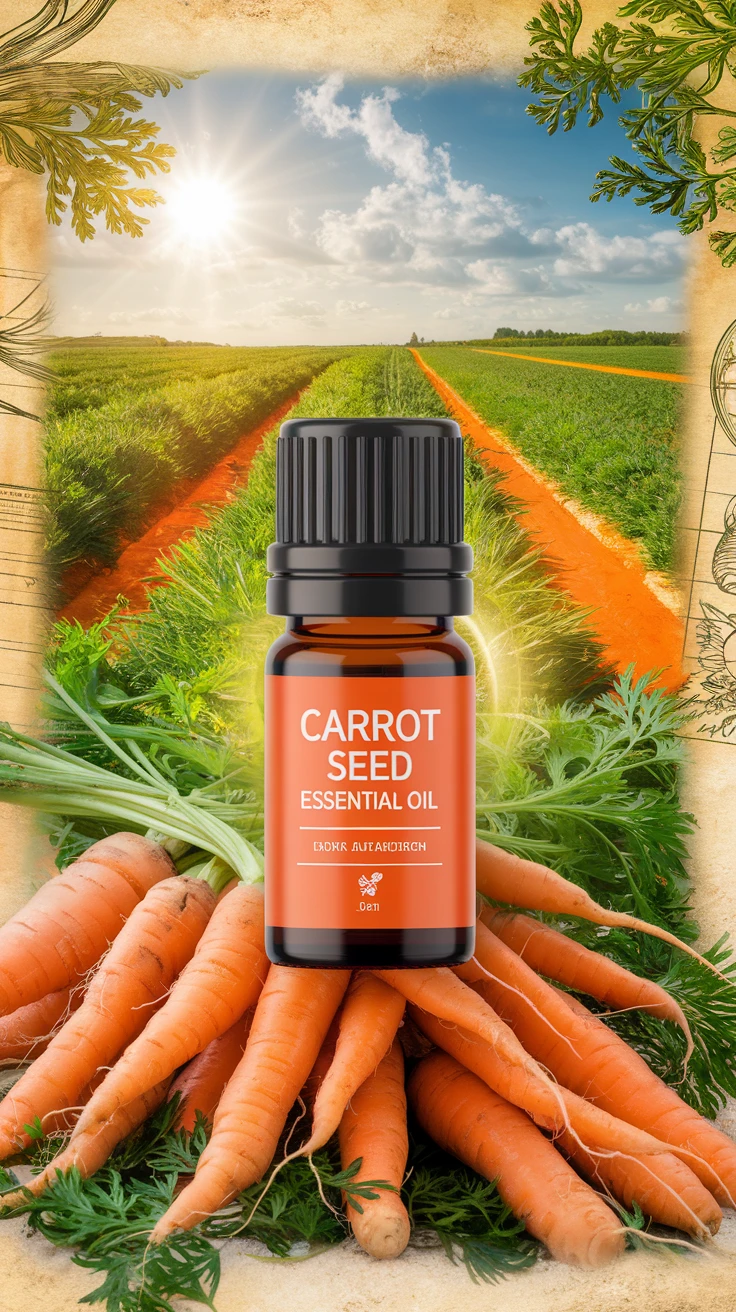
Don’t let the name fool you—this isn’t the same as carrot oil:
- High in antioxidants that protect against free radical damage
- Contains carotol and daucol that rejuvenate skin cells
- Natural SPF properties (though not a replacement for sunscreen!)
- Helps repair sun-damaged skin
Best for: Sun-damaged skin and age spots
Using Essential Oils Safely for Skin: Important Precautions
Before you start slathering these oils all over your face, let’s talk safety. Essential oils are potent plant extracts that need to be respected:
- Always dilute! Never apply essential oils directly to skin—aim for a 1-2% dilution (about 6-12 drops per ounce of carrier oil)
- Patch test first: Apply a small amount to your inner forearm and wait 24 hours to check for reactions
- Choose quality oils: Look for pure, therapeutic-grade oils without additives
- Be cautious with citrus: Lemon, bergamot, and other citrus oils can cause photosensitivity
- Pregnancy considerations: Some oils aren’t recommended during pregnancy (including some that help with melasma, ironically)
- Consistency matters: Results take time—think weeks to months, not days
Remember that essential oils for pigmentation should be part of a holistic approach that includes sun protection, a good skincare routine, and possibly dietary changes.
DIY Essential Oil Recipes for Even-Toned Skin
Ready to put these oils to work? Here are some simple but effective recipes to try:
Overnight Pigmentation-Fighting Facial Oil
- 1 ounce (30ml) rosehip seed oil
- 4 drops frankincense essential oil
- 3 drops lavender essential oil
- 3 drops helichrysum essential oil (optional—it’s expensive!)
- 2 drops carrot seed essential oil
Mix ingredients in a dark glass bottle. Apply 3-5 drops to cleansed skin before bed. Store in a cool, dark place for up to 3 months.
Brightening Spot Treatment
- 1 tablespoon (15ml) jojoba oil
- 3 drops lemon essential oil
- 2 drops tea tree essential oil
- 2 drops sandalwood essential oil
Combine ingredients in a small roll-on bottle. Apply directly to dark spots at night (not full face). Avoid sun exposure afterward.
Gentle Exfoliating Mask
- 1 tablespoon plain yogurt
- 1 teaspoon honey
- 2 drops lavender essential oil
- 1 drop lemon essential oil
Mix ingredients in a small bowl. Apply to clean skin and leave for 15 minutes before rinsing. Use once or twice weekly.
Complementary Approaches for Maximum Results
While essential oils for pigmentation can be effective, they work best as part of a comprehensive approach:
- Sun protection: This is non-negotiable! Use SPF 30+ daily, even on cloudy days
- Vitamin C serum: Use in the morning before sunscreen to boost protection and brighten
- Alpha arbutin or niacinamide: These ingredients pair well with essential oils
- Gentle exfoliation: 1-2 times weekly to remove dead, pigmented skin cells
- Hydration: Well-hydrated skin heals better and shows less pigmentation
- Diet: Increase antioxidant-rich foods and consider supplements like glutathione
Remember that stress can worsen hormonal pigmentation, so those relaxing properties of lavender and frankincense might be helping in more ways than one!
Key Takeaways
- Essential oils can help even skin tone through multiple mechanisms including reducing inflammation, inhibiting melanin production, and promoting cell turnover
- The most effective oils include lavender, frankincense, lemon, rosehip, sandalwood, helichrysum, and carrot seed
- Always dilute essential oils properly and perform patch tests before full application
- Consistency is crucial—use your chosen remedies daily for at least 6-8 weeks
- Combine essential oil treatments with sun protection and a solid skincare routine for best results
Conclusion
The journey to even-toned skin is often a marathon, not a sprint. Essential oils for pigmentation offer a gentle, natural approach that works with your body’s own healing mechanisms. While they might not deliver the overnight results of harsh chemical peels or prescription treatments, they also come without many of the associated side effects and can improve your skin’s overall health in the process.
As someone who’s struggled with pigmentation issues, I’ve found that the holistic approach—combining carefully selected essential oils with good sun habits and a consistent routine—yields the most sustainable results. Your skin is your body’s largest organ, and treating it with respect and patience usually pays off in the long run. Whether you’re dealing with sun spots, melasma, or post-inflammatory marks, there’s an essential oil blend that can help you on your way to that clear, even-toned complexion you’re looking for.
Frequently Asked Questions
How long does it take to see results from essential oils for pigmentation?
Patience is key! Most people begin to see subtle improvements after 3-4 weeks of consistent use, but more significant results typically take 8-12 weeks. Remember that skin cells turn over approximately every 28 days, so you need to give your skin time to regenerate. Older or more stubborn pigmentation may take even longer to fade.
Can essential oils completely remove dark spots?
Essential oils can significantly fade many types of pigmentation, but complete removal depends on various factors including the cause, depth, and age of the pigmentation. Recent, surface-level discoloration typically responds better than deep, long-standing pigmentation. For some people, essential oils may reduce spots by 70-80%, while others might see more modest improvements of 30-50%.
Are essential oils safe for all skin types?
Not universally. Those with sensitive skin, eczema, or rosacea should be particularly cautious and always perform patch tests. Some oils (like tea tree) work better for oily skin, while others (like rosehip) are ideal for dry skin. Additionally, certain essential oils are contraindicated during pregnancy or for people with specific health conditions.
Should I dilute essential oils before applying to skin?
Absolutely yes! Undiluted essential oils can cause serious irritation, chemical burns, or allergic reactions. For facial application, use a 1% dilution (about 6 drops per ounce of carrier oil) for daily use, or up to 2% (12 drops per ounce) for spot treatments. Never apply undiluted essential oils directly to your skin, especially facial skin.
Which carrier oils work best with essential oils for pigmentation?
The best carrier oils for pigmentation issues include rosehip oil (which has its own brightening properties), jojoba oil (which closely mimics human sebum), argan oil (rich in vitamin E), and sweet almond oil (lightweight and absorbs easily). For acne-prone skin, consider grapeseed oil, which is lightweight and non-comedogenic. Your carrier oil choice is just as important as your essential oil selection!
